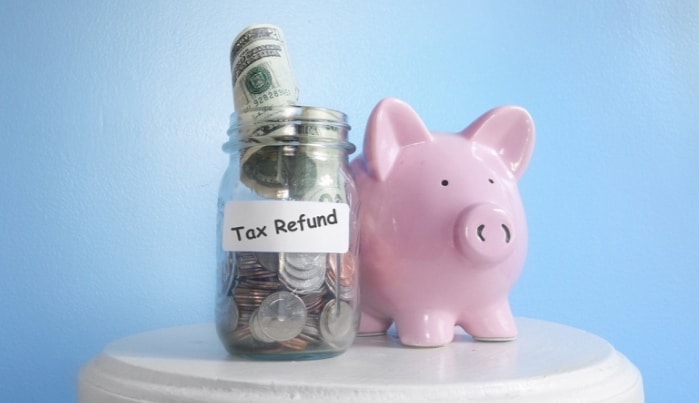
For many people, tax refund day is like Christmas in the spring. As they prepare their tax returns, millions of Americans hold their breath in anticipation of how much their tax refund is going to be — and then run to the mailbox every day hoping to receive their “gift” from Uncle Sam.
Last year, almost 122 million refunds were issued, which amounted to an average individual income tax refund of $2,811. Most people have big plans for how they’re going to spend their refund: a new big-screen TV or home entertainment system, a fancy summer vacation, a down payment on a new car or boat, or new jewelry or clothes, for example.
But here’s a different idea: Don’t spend your tax refund — invest it instead. No, investing your tax refund won’t be nearly as much fun as spending it. Nevertheless, it will almost certainly end up being a more beneficial financial decision.
Let’s assume you receive the average tax refund of $2,811. If you invested this in your 401(k) plan and earned a 6 percent average annual return (compounded annually), your money would grow to over $16,000 in 30 years. That is a nice little boost to your nest egg. If you did this every year for 30 years (assuming an annual contribution of $2,811 earning the same return), your 401(k) balance would surge to almost $240,000!
Explains financial advisor Mike Zaino, President and CEO of TZG Financial in Charlotte, NC, “That’s almost an extra quarter-million dollars in your retirement account – just for being disciplined and not blowing your ‘refund’ on things that provide instant gratification.”
Reducing debt is another wise financial choice for your tax refund, especially if you have high-interest credit card debt. Putting your tax refund toward paying down large credit card balances could save thousands of dollars in interest over the long term.
However, the smartest financial move when it comes to your tax refund is to not receive it in the first place. A tax refund represents the amount of money that you overpaid to the government in income taxes — the government is just giving your money back to you. When you receive a tax refund, what you have really done is given Uncle Sam an interest-free loan. Every pay period, you lent some money to the government; when you file your taxes the following year, you are just getting back what was yours all along.
Instead, talk to your payroll department about adjusting your federal income tax withholding so that less tax is taken out. This will increase your take-home pay each pay period. For example, if you receive a tax refund of $2,900, adjusting your withholding could increase your paycheck by about $111 per pay period if you are paid every other week. With the changes in tax rates contained in the Tax Cuts and Jobs Act, you should see if it’s time to adjust your withholding.
While your tax refund might seem like “found money,” it’s not — it’s your money. So, make wise financial decisions about what to do with it. One of the best decisions is to make your refund go away by getting more money every payday.
Regardless of where you plan to retire, the number one factor in ensuring that you can retire on your terms is your 401(k). Make sure that your 401(k) is maximizing its potential with this free analysis that checks your fees, fund mix, and other factors to help you hit your retirement goals.
